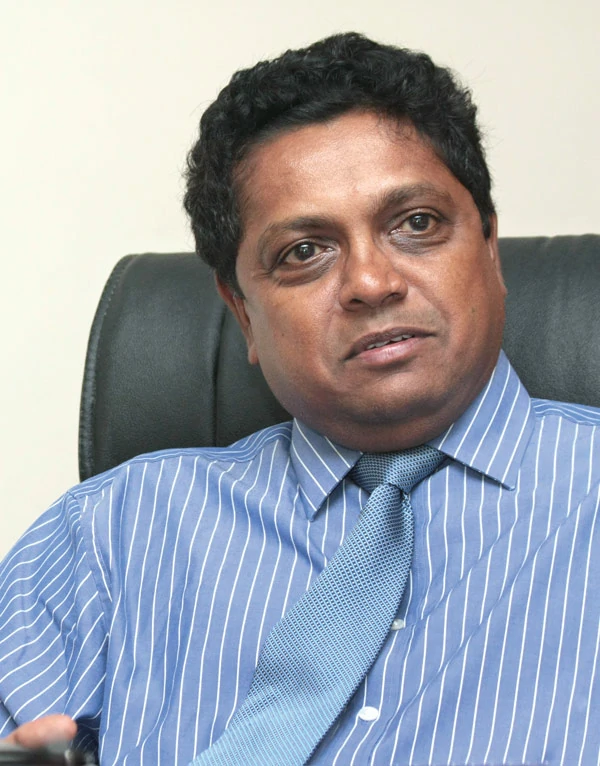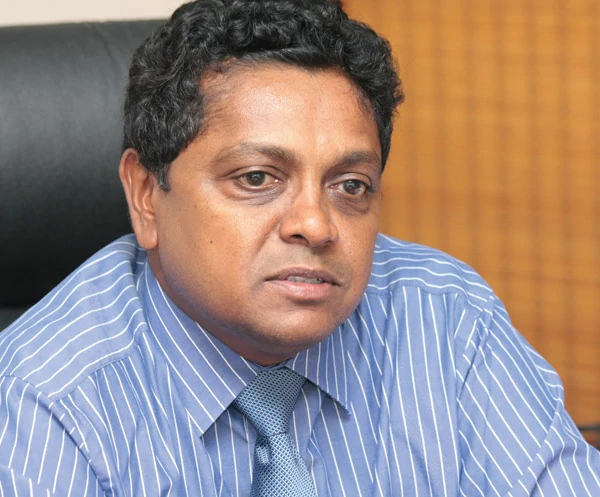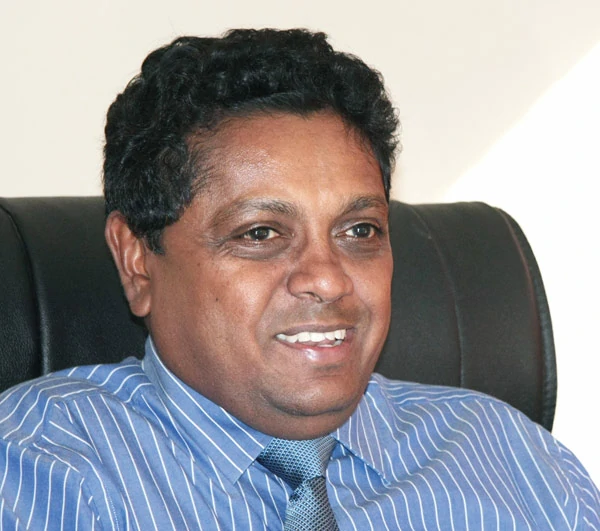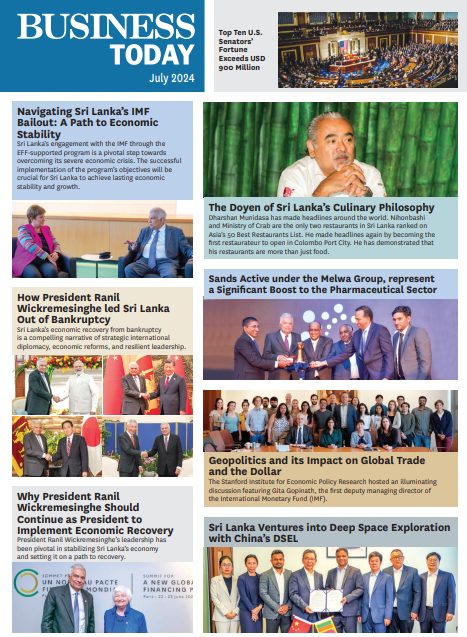
With tourism to play a key role in Sri Lanka’s economic growth and development, President Mahinda Rajapaksa recently set a target of attracting two and a half million tourists to the country’s shores by 2016. Anura Lokuhetty, the newly appointed President of the Tourist Hotels Association of Sri Lanka (THASL) spoke on the current trends in tourism and areas that need to be addressed in achieving this target, as well as the role and vision of THASL.
By Madhushala Senaratne
Photography by Menaka Aravinda
You were recently appointed as the President of the Tourist Hotels Association of Sri Lanka. Could you give us a brief overview of the Association? What is its role?
The Tourist Hotels Association of Sri Lanka is represented by the hotel owners and it has been in existence for a long period of time. In fact, we recently held our 43rd Annual General Meeting. The Association has a great responsibility to ensure that the tourism industry develops in a sustainable manner. In addition, the Hotel Association represents the requirements of the membership, especially taking steps to address their issues and direct them to the relevant officials and ministries.
Tourism is one of our biggest foreign exchange earners. If you look at Sri Lanka, we have only 15,000 formal sector rooms and 7,000 informal sector rooms. President Mahinda Rajapaksa recently set a target of achieving two and a half million tourists by 2016. This is an achievable target and the President is very correct in setting up this target, because without such guidance and direction, we will not be able to achieve growth.
On the other hand, tourism also helps towards the growth of other industries such as agriculture, fisheries and transport. If we achieve two and a half million tourists by 2016, about one tenth of our population will be involved in tourism – that is, about two million people. The creation of the Ministry of Economic Development will also help us enhance our role. This is vital, as tourism cannot be developed in isolation. There are many other industries that fall under the Ministry of Economic Development, and thus, it would be easier to co-ordinate and combine these efforts and proceed towards our target.
Could you give us a brief description of the current situation with regards to tourism?
In June, there were 44,730 tourists arriving in Sri Lanka, as per statistics of the Sri Lanka Tourism Development Authority. The same month last year, we had 30,324 tourists, thus, there is an increase. There were 13,000 tourists from Western Europe, while from South Asia there were 15,000 tourists with 10,000 from India. The number of arrivals from India has increased. However, Indian tourists stay for about three to five nights, whereas European tourists would stay for 14 nights. Whilst development of intra regional tourism is very essential, we should not forget the European tourists as they help us improve the room nights. In other words, one European tourist’s length of stay could be compared with three Asian tourists’ length of stay in Sri Lanka.
You mentioned that the President’s target of achieving two and a half million tourists by 2016 is achievable. What steps will be taken towards meeting this end?
The Government is very focused on this target, and we are supporting their efforts. Several locations have been identified in the East, Kalpitiya and North. New proposals will be introduced to attract new investors.
According to statistics available, if we consider the average stay of a tourist as six nights then there will be a requirement of 40,000 rooms to cater to the demands of two and a half million tourists. With a combined total of 22,000 rooms already across the formal and informal sectors, the country requires an additional 18,000 rooms.
A professionally efficient workforce is essential to provide the level of services expected by the international tourists.
Infrastructure needs to be developed as well, for example, the road network, air access and railways. We are happy that steps are being taken in this regard already. The Government has already commenced development of the Katunayake expressway, Southern highway, extending the railway from Matara to Kataragama and developing the Nothern railway; these are some projects that are underway with India/China collaboration.
I must emphasise the fact that, approximately only 30 percent of the capacity of the railways are utilised. If this can be increased to about 70 percent most of our traffic problems on the roads will be drastically reduced. I also strongly recommend having a few central car parks in and around Colombo and having a shuttle system to take the people from the car park to the locations at a very nominal rate. It would help to reduce time spent on the road, fuel wastage and environmental pollution.
What steps have been taken to address the human resource requirement?
A professionally efficient workforce is essential to provide the level of services expected by the international tourists. In view of the constraints that are still found in human resources development, the four main issues are; the shortage of qualified human resources, gaps in the availability of tourism training infrastructure, qualified trainers and teachers, the lack of attention given to the conditions of work in the tourism sector and the ongoing need for long-term national strategies and policies covering human resources development in the tourism sector. We require at least 400,000 employees by 2016 if we are to serve two and a half million tourists. You need to work on that from now. Hotel schools will have to be improved and capacities will have to be increased. The Ceylon Hotels Schools is a wonderful institution, but it needs to be restructured.
We have to relook at the curriculum. Currently, the Hotels Schools’ programme is not recognised as a university degree. We will look at upgrading this to a degree awarding institution, as well as introducing higher education programmes such as MSc. I also suggest including tourism as a subject in the school curriculum. This profession is a field in which you can find a job in any country. Even having people training in the industry, will help us export skilled labour, rather than unskilled labour, so that the country will get better revenue.
Another way of getting the expertise and the experienced employees back to this country is by offering some special incentives to those Sri Lankans who have migrated to different countries, due to the war.
What are some of the challenges faced by the industry and how will these be addressed?
We need to find appropriate locations for new investments, and the Government must play a role in this task and provide the required land. The Government has already taken steps to speed-up the approval process.
Refurbishing and repositioning the existing hotels is another urgent issue that needs to be addressed to cater to the increasing demand. Unexplored, niche markets and new trends in tourism should be looked at, such as health tourism, boutique hotels and eco tourism. For instance, some boutique hotels charge around US$500 and with this, you do not need large numbers of guests, but at the same time, the country is able to earn better revenue.
Development of intra-regional traffic should also be considered strongly.
The taxes levied against tourism also need to be considered. At the moment, we have to pay 12 percent VAT, three precent on Nation Building, one percent TDL, and ten percent on service charge. In addition, there is a levy of five percent on liquor and one percent on tobacco. Even though tourism has improved year on year – there has been a 47 percent improvement last month – the taxes have a negative impact; hotels find it difficult to sustain. We strongly recommend that a uniform tax system be introduced all around the country.
Sporadic changes in legislature is another obstacle. Current legislature states that a liquor license will not be issued if a religious entity or a school is situated within 500 metres. This regulation cannot apply to hotels that have been already granted approval prior to this legislature was gazetted. If the industry needs to be developed, these issues need to be addressed.
Development of intra-regional traffic should also be considered strongly. If you look at South Asia, South Asia records ten million tourists per year, while Northeast Asia gets about 90 million and Southeast Asia receives 70 million. However, Southeast Asia and Northeast Asia has shown a growth of ten percent whilst South Asia has shown a 15 percent growth as per WTO’s latest statistics. We have a neighbouring country with one billion people. We need to combine destinations. For example, Sri Lanka and Maldives can be combined, with tourists going to Maldives for diving and water sports, and coming here to see the cultural attractions. We also require a budget airline in this region to encourage such regional travel.
Strong measures are also needed to address issues such as harassment on the beaches, on the roads and cultural sites. Government will have to create community centres for vendors. These centres could be developed adjacent to hotels, as they can continue with their businesses, while tourists can also benefit. Conducting cultural shows and handicraft exhibitions in those centres should also be encouraged, as well as other events to attract tourists, such as conferences, conventions and promotions. For instance, the Kandy perehera must be advertised well, there is nowhere in the world where you will find such a magnificent pageant.
You mentioned developing intra-regional travel. How will this be done?
I attended a recent meeting with representatives from the other SAARC countries, where this issue was widely discussed. There is great scope for promoting tourism in the region due to historic, social and cultural links of the people. It is still at an infant stage, but all the countries who were present that day, were keen on developing intra-regional travel and tourism. There was also a suggestion for all the SAARC countries to promote tourism under one banner and one theme. Thus, when we go for world travel exhibitions, we could present ourselves as a region, which will attract more tourists.
This region – with the underwater paradise of Maldives, the diversity of Sri Lanka, incredible India, the unique mountains of Nepal, as well as the rich history of Pakistan, Bangladesh and Afghanistan – has much to offer to the tourists. The East Asian market, which includes China, is the biggest and the best market place for this region. The leisure potential of China could well be the focus of the strategy. When you consider the opportunities, we can segment them into several areas, such as religious tourism, cultural tourism, nature tourism, beach tourism, eco tourism, wildlife tourism and heritage tourism.
In addition, with increasing concerns regarding carbon footprint and carbon emissions, long haul travel will be affected. This is another reason that it is important for the country to develop on intra regional tourism, and we are currently looking into this seriously.
A number of hotels are being set-up in the country. How do they regulate and ensure that the standards are met?
The Government is taking steps to ensure that the basic standards are met. Hotel classifications have been introduced. For instance, when building a new resort – it must be planned in such a way that there are central facilities for sewerage treatment, waste water disposal and garbage disposal.
If Sri Lanka achieves a target of two and a half million tourists, we will be able to earn US$ two billon of foreign exchange. In addition, new employment opportunities will be created and other sectors will also be benefited.
Environmental regulations have also been introduced. Development of tourism can have a negative impact on society, if it is not properly regulated. We must not allow unauthorised structures on the beach and coast reservation policies should be safeguarded. Environmental programmes must be conducted at every stage from schools to universities to organisations. This will help to preserve our country.
Important issues of sustainable tourism development include effective planning, efficient coordination, capable enforcement of legislation and more constructive governance. While many public and private sector decision makers involved in tourism planning and management have realised that environmental and cultural resources are essential components and valuable tourism assets, substantive progress in applying systematic planning based on principles that also include economic sustainability has been limited. The principles of sustainable tourism have been widely accepted but actual implementation by national, regional and local governments, as well as by tourism entrepreneurs, has sometimes been slow and only partially successful. The issue of economic sustainability needs more comprehensive consideration along with the environmental and cultural aspects.
To what extent does tourism benefit other sectors?
For instance, tourism will benefit the fisheries and agricultural sectors. With increase in tourist arrivals, there will be a demand, for example, for fish and vegetables. Thus, the farmers will receive the direct benefit. However, proper mechanisms need to be set in place. For instance, fish cannot be sold on the roadsides, they need to be served in complex places that are air-conditioned. In addition, post-harvest management needs to be addressed. A country’s education system must be geared to handle the resources.
Also, development of tourism will benefit other industries such as handicraft. The average spending of a tourist is about US$ 80. In Maldives it is about US$ 200, while in Bhutan, the minimum tourist expenditure is US$ 200-300 a day. Although Bhutan receives a less number of tourists, they are able to gain more revenue through tourism. If you consider the cottage industry such as pillow, lace, handicraft and mats – development of these industries will create employment and additional foreign exchange revenue. Vocational subjects must be introduced in schools. We can achieve full employment in this country if tourism is properly developed.
What are the future plans of the Association?
We are looking at working hand in hand with the Government and to provide all the support required by the Government to formulate their tourism master plan. The Association consists of members with years of experience working in the hotel industry; we have a lot of expertise and knowledge. Therefore, we will provide the required information, and other facilities to enable the Government to develop tourism. In addition, we will promote Sri Lanka – the attractions and events and also participate in international conferences.
To build 18,000 rooms you need at least US$ 1.5 billion and need to attract new investors. We will help to formulate policies and regulations to attract investors by highlighting the problems that are faced by investors. Thereby, help the Government to restructure the system.
You have over 30 years of experience in the Hotel sector, and you are also the CEO of Serene Pavilions. Could you give us a brief description of your journey and experiences so far?
This is my 32nd year in tourism. I started in 1978 as a management trainee, and have done perhaps every job in the hotel industry. I was appointed as the General Manager of Palm Garden Hotel and Riverina Hotel. Later, I was also the Project Director of Eden and first General Manager of the hotel. I was promoted to Director Operations of the Group and Managing Director of Confifi Engineering. Thereafter I joined Galle Face Hotel as the Director Development and the General Manager, where I was involved in the repositioning of the hotel, especially renovating the Regency Wing. After the Tsunami in 2004, I was recalled to Confifi Group as CEO and was involved in rebuilding the damaged Confif Group of Hotels. Later, I served as COO of Galle Face Hotel and CEO of the Ceylon Hotels Corporation. During my tenure there, I restructured the Hotels Corporation. Thereafter, I started building this property – Serene Pavilions – a new dimension to Sri Lanka tourism, truly an exclusive boutique hotel – with a foreign investor – my good friend Clive W Leach CBE and two of my good friends from Sri Lanka, where I currently work as the Deputy Chairman and the Chief Executive. I also served as the Chairman of the Institute of Hospitality and I was the Director of the Sri Lanka Institute of Hotel Management. During my last 32 years I have accomplished much in various task forces appointed by the President and the prime ministers of previous governments. In fact, I have refurbished many hotels in Sri Lanka as the Managing Director of Confifi Engineering. Having been involved in the industry for over 30 years, I am aware of the difficulties faced by the hoteliers, as well as the solutions that must be implemented without delay.
Final thoughts?
If Sri Lanka achieves a target of two and a half million tourists, we will be able to earn US$ two billon of foreign exchange. In addition, new employment opportunities will be created and other sectors will also be benefited. Sri Lanka has an abundance of resources – culture, nature, adventure and we are a compact country. We have everything that is ideal for tourists. Now, is the best time to focus on tourism and I am glad to be the President of the Association at such a time.








